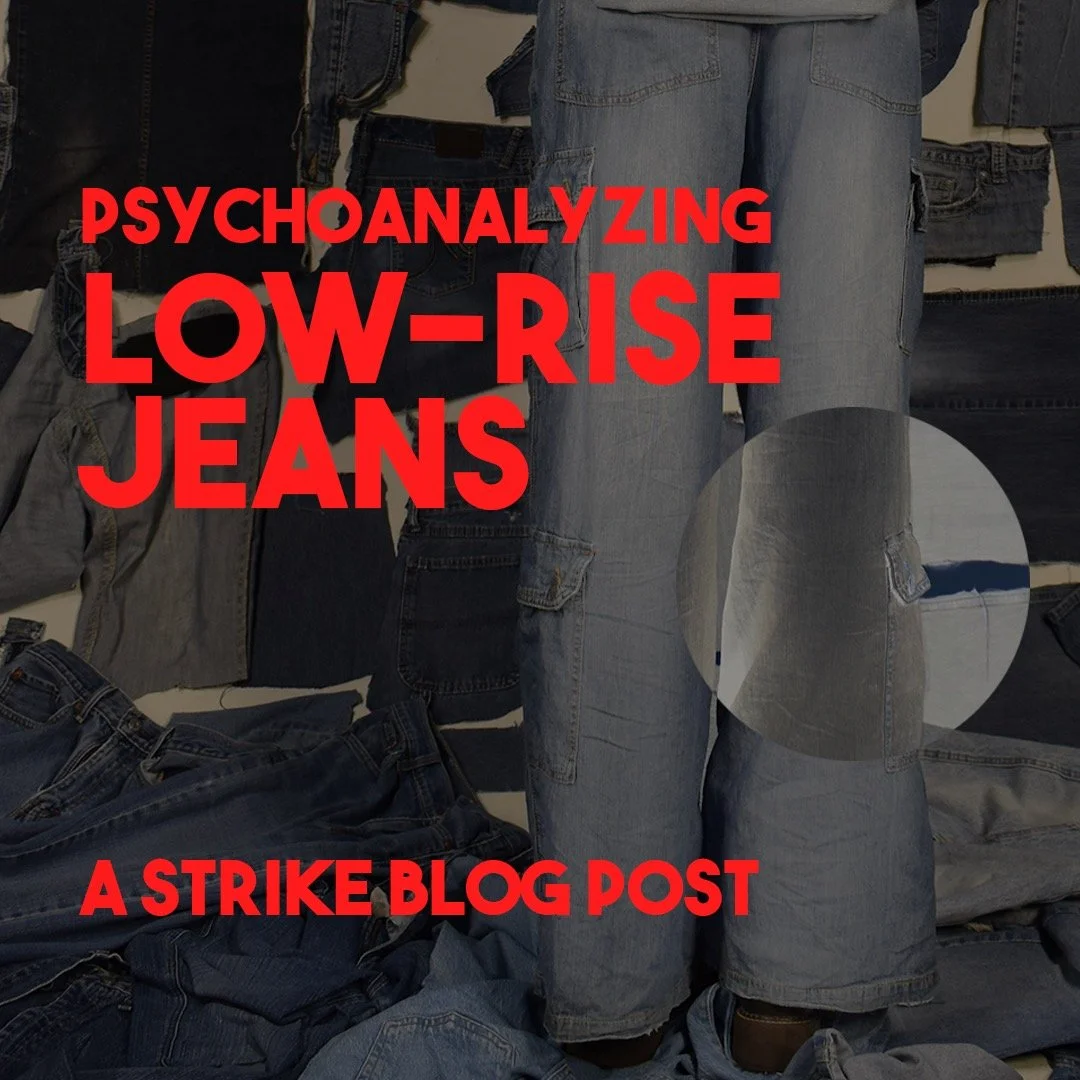Psychoanalyzing Low-Rise Jeans: A Contemplation of 2000s Throwbacks
Graphic Designer: Katie Zhu
It’s no secret that 2000s fashion is back. A look around town or a scroll through Pinterest will reveal this reality through babydoll tops, micro-mini skirts, ballet flats, and, of course, low rise jeans. A period characterized by the wars between grunge and glitz and massive and micro has made its way back into mainstream fashion. The tumult in fashion (then and now) reflects ongoing commotion in our current realities, rendering the current 2000s resurgence far more than just another trend.
While it’s true that fashions fall in and out of style over time, there are several factors that make this current resurgence unique. The first of which is that it is not just a resurgence, but a recycling. Rather than following the pattern of other trend cycles and repackaging trends into new forms, the current cycle is (sometimes literally) rewearing trends directly from the era of its inspiration. The 1960s took 1920s flapper dresses and turned them into shift dresses; the 2020s took 2000s low rise jeans and kept them as low rise jeans.
Oftentimes, this recycling is advertised deliberately as what it is. Particularly through social media, trends are described in terms of characters that wearers seek to emulate. Whether these characters are Bella Swan, Rory Gilmore, or Elena Gilbert, the bottom line is the same: they call the 2000s home. By nicknaming trends after characters, wearers send a very clear message that they are not trying to put their own spin on old styles, but rather, emulate those styles completely. In this way, the 2000s resurgence is largely unique.
It is of particular relevance that Gen Z takes the primary role in perpetuating these trends, a group whose first memories were formed in the 2000s. This means the clothes we wore then, the clothes we wear now, and the time period itself are all, for the majority of us, steeped in nostalgia. If this is the case, then it’s not unreasonable to say that the resurgence recycling old trends as they are rather than repackaging them into updated versions of themselves plays into this nostalgia.
It’s worth wondering why nostalgia is taking such a large and unprecedented role in fashion today. It’s probably true that the usual suspects like social media and increased communication have something to do with it, but I would argue that there’s something more at the heart of what’s going on. I would argue that it’s escapism. In a time full of global catastrophe, and political tumult, and rampant consumerism, it’s not hard to see why someone would want to get away from the scary things in life. Romanticizing the trends of your childhood, and, by proxy, your childhood itself, just as those trends resurface is a really compelling way to do that. And while this desire is understandable and the fashion is fun, I have to wonder if it’s helpful. It’s difficult to face your problems, big or small, head on, when you’re stuck in the past.
Strike Out,
St. Louis
Written by: Mallorie Goodwin
Edited by: Ali Koenig
Graphic Designer: Katie Zhu

